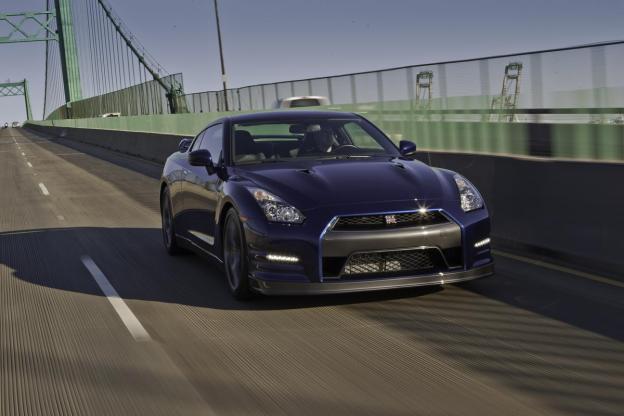 Reports of the Nissan GT-R’s death have been greatly exaggerated. Despite worrying signs, like a cold shoulder from Nissan CEO Carlos Ghosn and the retirement of GT-R godfather Kazutoshi Mizuno, the company confirmed that the next generation GT-R is a go, and is being prepared for a 2018 debut.
Reports of the Nissan GT-R’s death have been greatly exaggerated. Despite worrying signs, like a cold shoulder from Nissan CEO Carlos Ghosn and the retirement of GT-R godfather Kazutoshi Mizuno, the company confirmed that the next generation GT-R is a go, and is being prepared for a 2018 debut.
It turns out that Mizuno had taken a leave of absence due to health issues, but he is now healthy and back with the company. Mizuno’s leave did push back development work on the new GT-R, which was supposed to be finished by 2015, causing some confusion about the car’s fate.
In the meantime, the current GT-R, called R35, will be restyled. Nissan executives told Inside Line that they felt the car needed to be freshened up, since 2013 marks its sixth (calendar) year of production. Nissan wants to keep the GT-R competitive with the Porsche 911, which gets a major overhaul every few years.
The restyling may be limited to the car’s front end, which is less complex than a complete redesign. Regardless of how the changes end up looking, Nissan seems committed to the GT-R.
It should be. The GT-R has had the track to itself for some time, but that is changing. Honda is bringing out a new, hybrid version of its legendary NSX supercar (sold as the Acura NSX in the United States), and Toyota has commissioned BMW to design a sports car for it. A Japanese performance car war is beginning.
The competition across the ocean is also heating up. Porsche launched a new 911 in 2012, and will soon roll out hardcore Turbo and GT3 models. In America, the GT-R will have to contend with the reborn SRT Viper and the new seventh-generation Corvette due out next year.
In the midst of all this, the current GT-R is still an impressive machine. A 2012 GT-R will do 0 to 60 mph in 2.9 seconds and hit a top speed of 191 mph. It also famously lapped the Nurburgring faster than Porsche’s 911 (997) Turbo.
The GT-R does all this while maintaining an air of civility: its all-wheel drive makes it tractable, and it’s actually quite roomy and comfortable inside. The Nissan known as “Godzilla” combines performance and everyday usability better than almost any car.
The R35 GT-R should be able to hold off the Japanese, German, and American competition until 2018, but Nissan needs to have a long-term plan to keep it competitive.
Americans may be more familiar with the Z, but the GT-R is Nissan’s performance icon, the company’s equivalent to the 911 or Corvette. The name has been around since the 1960s, and was applied to performance versions of the Skyline before the bespoke R35 was introduced in 2008.


